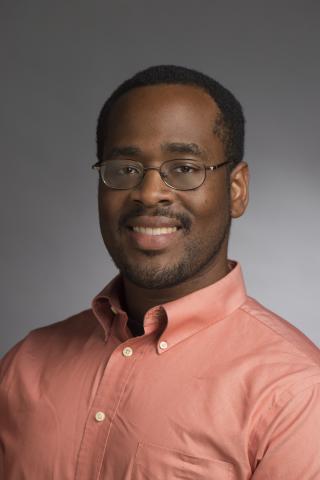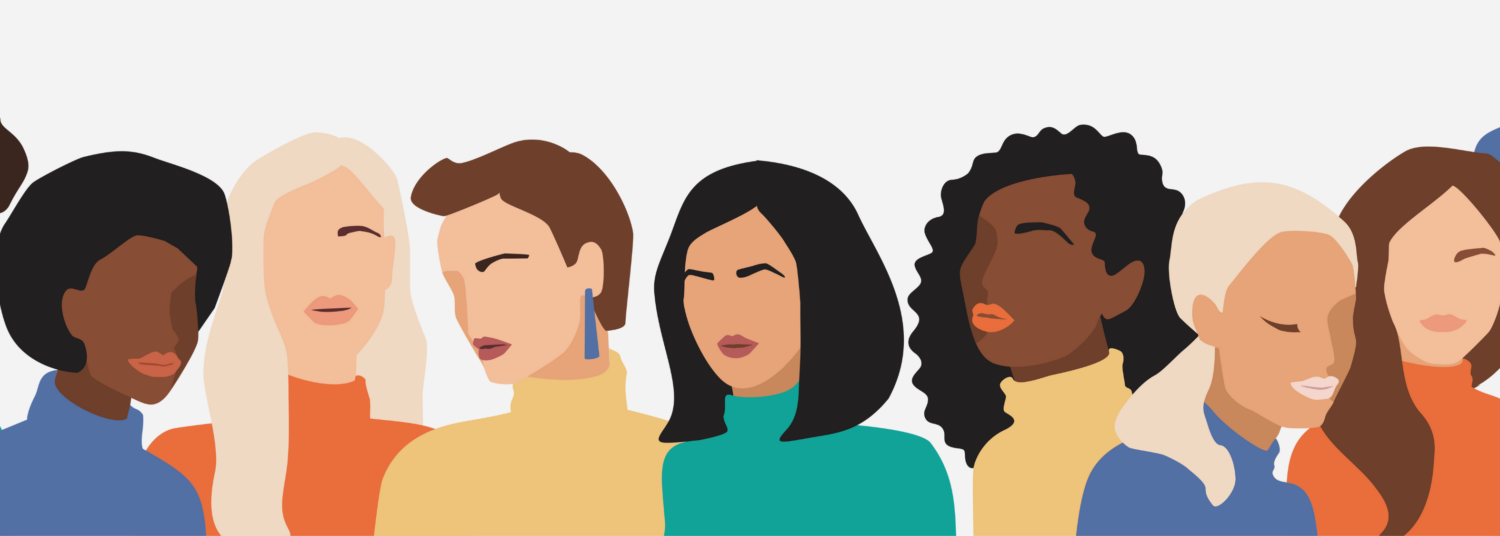Editor’s note: This article was first written and featured on NDC’s listserv for Black History Month in 2019. It has been edited and adapted, with Dr. Hill’s permission, to share again in 2020.
Black History Month is an annual observance of contributions, achievements, and culture of black Americans. In K-12 education, black American contributions and events may not be acknowledged or taught, so Black History Month is a way to make sure that children from all walks of life know that black history, as well as all cultural histories, are also part of American history.
Had black history been accepted as part of American history, we probably would not have Black History Month. The fact that it exists tells us that black history and culture are still generally excluded from American institutions — except for some communities that regularly observe them. This exclusion is part of the socio-political and institutional barriers facing the black community, including black deaf people.
Deep Historical Roots
Those barriers can be traced to the 17th century, when the transatlantic slave trade began. To maintain the economy, colonial America depended on the labor of slaves and indentured servants – immigrants who signed a contract to work a certain number of years in exchange for room, board, and freedom. Slaves were typically of African origin and indentured servants were typically poor immigrants from European countries.
Race was not the only difference between them; they also had different sets of legal rights. Slaves had no legal rights — they were considered personal property — but indentured servants had limited legal rights which would be full by the time their contract ended. These differences led to more laws that further restricted the rights and liberty of people of African origin.
The laws made restrictions so common that society assumed that the racial distinction was natural and black people should be treated differently. This lasted for nearly 200 years, until the end of the Civil War in 1865 when black slaves were proclaimed to be free.
During the Reconstruction era from 1865 to 1877, the 13th, 14th, and 15th constitutional amendments were specifically written to recognize and protect the citizenship rights of 4 million black people who were freed from slavery. Sadly, their rights were largely ignored during the segregation era starting in 1900.
It took half a century to finally restore and protect black people’s citizenship rights during the Civil Rights movement in the 1950s and 1960s. From the mid-20th century to the millennium, black people’s rights and well-being should have been protected, but instead — with economic and political pressures available through legal means — they are still vulnerable to the socio-political and institutional oppression that has been maintained in the past three centuries. Such oppression is so normalized that it is often imperceptible to people with socio-political privileges, including racial and hearing privileges.
Black deaf people’s intersectional identities have made them experience life differently under racism and audism. Audism is defined as the system of oppression based on hearing ability. Typical examples of audism are communication inaccessibility, violation of legal rights, job discrimination based on hearing, and paternalistic attitudes.
Below are the issues affecting black deaf people through the past century.
Limited Access to Language and Communication
In the past (and present), most deaf people who were born to hearing families typically didn’t use sign language as their primary communication. In the 18th and 19th centuries, deaf children had to attend residential schools for the deaf to receive their education; the deaf schools were often the place where they first learned sign language.
Black deaf children were not allowed to enroll in the southern deaf schools due to slavery and segregation. As was true for black hearing people in the South, there was no mass education for black deaf children until after the Civil War. That means American Sign Language (ASL), which existed since 1817 in Hartford, Connecticut, was not accessible to southern black deaf children.
In North Carolina, the first black deaf school with its own campus was built in 1869; black deaf children finally had an opportunity to learn sign language to communicate. In 1938, 17 southern and border states had built schools for black deaf children. Those schools were still segregated until after the 1960s, when the publicly funded schools had to be integrated; not doing so was unconstitutional. The last school to integrate was in 1978 in Louisiana.
During segregation, there were different sign language varieties that arose at black deaf schools. Black deaf children did not have contact with white deaf children who used ASL, so the signing was completely different between them, to the point it was not understandable. The varieties used by black deaf children were colloquially called Black ASL.
However, after integration, Black ASL was pushed aside or limited to black deaf social circles due to the misconceptions about Black ASL, which was so different from mainstream ASL. Today, the former Black ASL varieties are dying with the older generations of black deaf signers, but some Black ASL signs survive through the multi-generations of black deaf families or through the black deaf or racially integrated communities.
Those signs are still out of reach for black deaf children in schools where mainstream ASL is the norm.
In 2011, my co-authors and I published a book called “The Hidden Treasure of Black ASL: Its History and Structure,” with the historical account and linguistic description of the Black ASL dialects. The goal of the book is to make the public aware that those dialects have always existed and that there should be a way to recognize and preserve them as part of the American Deaf history and culture.
A documentary about Black ASL, “Signing Black in America,” will also soon be released on PBS. The film is produced by the Language and Life Project at North Carolina State University.
Barriers to Education, Employment, and Community Network
Deaf communities often maintain their social networks through schools, clubs, sports, and jobs. The networking opportunities extend to deaf people who know others in the communities, and thus can gain access to resources to meet their needs.
However, as with all aspects of society, there is still a racial line as a historical remnant of the U.S. racial segregation. For example, in 1925, the National Association of the Deaf (NAD) changed its bylaws to revoke and prohibit the membership of black deaf people.
This change at the historical deaf association, combined with the educational segregation of black and white deaf children, enforced the social separation of black and white deaf communities by limiting networking contacts.
Today, black deaf people can enjoy racial integration and they can receive an education, be employed, and play sports along with their white peers, but the social, educational, navigational, and cultural capitals built through decades of segregation are not equal.
The privileges (or the lack thereof) are often not perceptible until one examines the social networks closely. Black deaf K-12 and ASL teachers are still severely underrepresented. There are not many black deaf administrators or researchers. The number of black deaf people on the boards of deaf organizations is still too low. Black deaf entrepreneurs are still not visible.
It is true that deaf people are generally underrepresented, but when it comes to counting black deaf people, the number is too few, based on the findings from the NDC’s “Postsecondary Achievement of Black Deaf People in the United State: 2019.”
Negative Attitudes and Biases
With the history of racial (and audist) oppression, segregation, and underrepresentation, social attitudes and biases within people have been consistently reinforced, and people are often unaware of their continued effects.
It doesn’t have to be a major social error or misconduct. It can be simple as complimenting black people on being “articulate” with the standardized use of English; or saying that they are different from other black people. These statements contain the general assumption that black people don’t speak well or can’t exhibit socially acceptable behaviors.
Speaking from my life experience as a black deaf person with a doctorate degree, I have had people doubt that I would excel in school, that I could lead, that I could communicate well, and that I had a knowledge of certain subjects.
It is one thing to express doubts based on personal views, but it is another when they are based on social stereotypes. I am grateful to have had encouragement and support from people in my life to push through such negativity, but some black deaf people may not be as fortunate to have such support.
Black deaf children can pick up on such biases and they may internalize the negative messages about themselves and their own people. This struggle was illustrated in the film “Climbing the Avalanche,” produced and directed by Laurene E. Simms.
Lack of Qualified and Experienced Professionals
These factors, such as limited access to language and communication, reduced social opportunities, and negative attitudes and biases, contribute to the underrepresentation of qualified and experienced black deaf professionals that can serve as role models for black deaf children and adults.
Before integration, black deaf children attended black deaf schools where only vocational education was available and it could only go up to sixth or eighth grade. This limited their chance to go to college; if they wanted to go to college, they would have to be enrolled in a public school or move north to receive a diploma.
Andrew Foster, the black deaf missionary founder of African Deaf Education, did just that. He attended the black deaf school in Alabama.
He wanted to go to college, so he had to move up north to stay with his relative to complete his secondary education. With his eligibility, he was one of the first black deaf students to attend Gallaudet College (University) in 1952 and the first black deaf college graduate at Gallaudet in 1955. That was over 60 years ago, around the time when racial integration was mandated.
Within two or three generations, we have about, for example, 14 black deaf Americans with Ph.D., one black deaf lawyer, and three or four acclaimed black deaf actors.
We have C.J. Jones, the black deaf entertainer who enjoys his film success in “Baby Driver” and “See What I’m Saying: The Deaf Entertainers Documentary.” We have Warren “Wawa” Snipe, the black deaf Hip-Hop entertainer, who recently appeared in the CW’s “Black Lightning.” We have Jade Bryan, the black deaf film director, who has earned awards for her documentary and feature films.
We have a black deaf lawyer, Claudia Gordon, who worked in the Obama administration. We have black deaf academics including Dr. Joseph Hill, Dr. Carolyn McCaskill, Dr. Angela McCaskill, Dr. Glenn Anderson, Dr. Elizabeth Moore, and Dr. Laurene Simms. To see such achievements are impressive and inspiring, but in the country of 300-plus million people, they are simply not visible.
With the intersection of racism and audism, this is not to say that it is impossible for black deaf people to achieve their education, employment, and other life goals; there is a good number of black deaf people who enjoy their personal and professional achievements regardless of their background.
However, it is important to recognize the ideological and institutional barriers that still exist in every part of the U.S. We need to recognize our responsibilities and roles in identifying and dismantling those barriers so we can move forward as the progressive society and celebrate the contributions of those from all walks of life. Diversity should be our strength, not a burden.
Links and references
-
https://dcmp.org/learn/366-black-deaf-culture-through-the-lens-of-black-deaf-history
-
Garberoglio, Carrie Lou, Lissa D. Stapleton, Jeffrey Levi Palmer, Laurene Simms, Stephanie Cawthon, and Adam Sales. “Postsecondary Achievement of Black Deaf People in the United States: 2019.” Washington, D.C.: U.S. Department of Education, Office of Special Education Programs, National Deaf Center on Postsecondary Outcomes, 2019
About Dr. Hill
Dr. Joseph Hill is an NTID faculty member in the American Sign Language and Interpreting Education Department at Rochester Institute of Technology.
He is originally from Cincinnati, Ohio, and earned a bachelor’s degree in Systems Analysis from Miami University of Ohio. He then went on to earn his Master’s degree and Doctorate in American Sign Language linguistics at Gallaudet University.
Additionally, Dr. Hill was one of the main presenters in a tribute to missionary Andrew Foster, known as “The Father of Deaf Education in Africa” to NTID’s Dyer Arts Center. He is also one of the authors of the book, “The Hidden Treasures of Black ASL: Its History and Structure.”
Dr. Hill is also a strong supporter of National Black Deaf Advocates (NBDA), which advocates for civil rights and access to education, employment, and social services.









